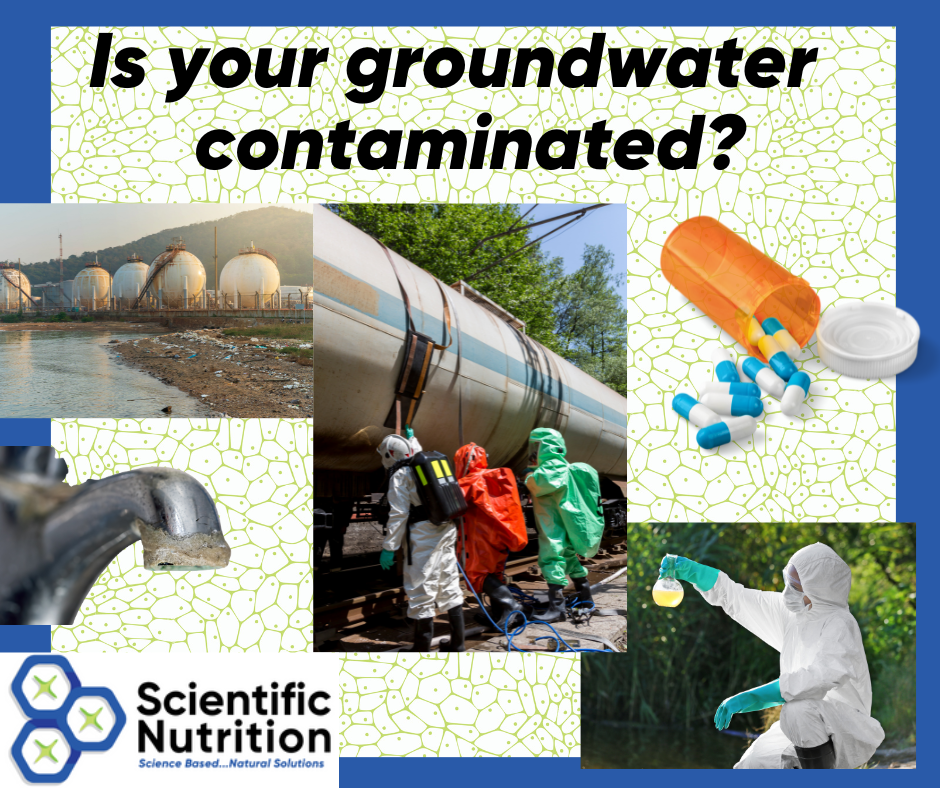Take a deep dive into groundwater contamination to guard your health!
Life on Earth heavily depends on groundwater. The water under the earth is the most important source of drinking water, agriculture, and industrial activities. Sadly, this invaluable divine asset is becoming polluted, impure, and hazardous daily.
In this article, you will read valuable insights about groundwater contamination, its sources, health effects, and steps to protect yourself from drinking contaminated water.
For a happier and healthier life, let’s dive into it.
What is Groundwater Contamination?
When the fresh underground water reservoir gets polluted with harmful chemicals, drugs, heavy metals, and human waste, it becomes contaminated and named contaminated groundwater.
Groundwater is essential; it is naturally protected and not exposed to human activity. But after the industrial revolution in the late 18th century, natural freshwater reservoirs began to be polluted. This was precisely when groundwater contamination became a severe problem for humanity.
Chemicals and other wastes find their way to sneak underground. It is fluoride that hides in the depths or spilled chemicals that infiltrate unnoticed, or even the remnants of drugs… all can cause groundwater contamination. Heavy metals play their role in disrupting our mineral balances and can even trigger mental instability once one reaches toxic levels.
Before discussing the nasty chemicals, look at potential sources that pollute underground water.
Sources that Contaminate Groundwater
Human beings are progressing and utilizing more artificial machinery to be more productive. Nothing is wrong with new working or living methods unless they do not affect our natural assets or environment.
Some potential sources which contaminate underground water are;
1. Buried Storage Tanks are the biggest resource for groundwater contamination.
Storage tanks, including oil, gasoline, and other chemical substances, can contaminate groundwater. The United States environmental protection agency states that approximately 542k storage tanks are buried underground.
These underground storage tanks (USTs) are the greatest source of poisoning drinking water.
2. Superfund Sites Hazards can hugely contaminate groundwater.
These sites are uncontrolled or abandoned, where chemicals and wastes are in high quantities.
The United States has almost 1,329 super fund sites on the National Properties List (NPL). Just imagine the consequences these sites are having for underground water contamination.
3. Cesspool Groundwater Contamination is the growing concern.
A cesspool or septic catch basin used for onsite wastewater in homes, offices, or other buildings is carefully designed to facilitate the safe drainage of human waste. But if this septic system is not functioning correctly, it contaminates groundwater adversely as it contains bacteria and chemicals.
4. Cracked landfill and waste dumps are becoming more of an issue.
In the “good old days,” there were fewer landfills, and every town had its own dump. Less population, less waste. But nowadays, landfills are a major health concern and a threat to underground water contamination. See if one is located near you that may be contaminating your private or municipal well.
5. Excessive use of chemicals and rock salts can contaminate groundwater.
Chemicals are abundantly used for many purposes. The high amount of chemicals negatively and potentially poisons the water underneath the surface. Rock salts are widely used in the USA for different purposes, specifically in the winter season to keep roads and surfaces free of ice. These rock salts also have the same consequence.
Chemicals that Contaminate Groundwater
Almost any chemical used in abundance and carelessly has the potential to poison the water.
Some of the most dangerous chemicals or elements are;
- Fluoride – which can seep into groundwater through many sources, like industrial activities, geological formations, and water treatment processes, poisons the underground water. Fluoride can enter groundwater by dissolving minerals and agricultural activities.
. - Chemical spilling – uncontrolled or accidental release of chemicals can instantly poison the water under the Earth. This spilling may include chemicals like petroleum, gas, solvents, or gases.
. - Heavy metals – including toxic metals such as lead, mercury, and arsenic, can contaminate groundwater through industrial activities, mining, and natural weathering of rocks and soils.
. - Peed-out drugs – (pharmaceuticals or prescription drugs) can enter the environment through various routes, including wastewater treatment plants, landfills, and septic systems. They can ultimately end up in groundwater sources.
You see, most of the resources are directly linked to human activities. Now, learn more on the dangers of drinking or using this poisonous, contaminated, and impure water.
Health Effects of Contaminated Groundwater
Each sip or use of contaminated groundwater can ruin your health. It’s like sipping from a cup full of poison.
Side Note: All the facts provided in this section are based on the research done by Groundwater Foundation (US), Environmental Protection Agency (EPA, US), and PubMed Central (PMC).
- According to PMC, unusual exposure to chemicals and heavy metals can increase the risk of kidney, bladder, and liver cancer. For instance, arsenic, commonly found in contaminated groundwater, can cause bladder and skin cancer.
. - World Health Organization states that long-term exposure to high fluoride levels causes dental fluorosis, later converted into skeletal fluorosis. This is mainly reported in warm areas where water consumption is greater.
. - Imbalance intake of Heavy metals such as mercury and lead can make your life miserable. According to EPA, contaminated water contains heavy metals in high ratios, which causes respiratory issues such as asthma and chronic obstructive pulmonary disease (COPD). There is also a correlation to autism, schizophrenia, and depression.
. - Exposure to specific contaminants in contaminated groundwater can lead to gastrointestinal issues such as nausea, vomiting, and diarrhea. For example, long-term exposure to nitrates found in contaminated groundwater has been linked to “blue baby syndrome,” which can cause an infant’s skin to turn blue due to decreased oxygen in the blood.
. - Contaminated water costs your reproductive health. Exposure to chemicals found in contaminated groundwater, such as bisphenol A (BPA), can disrupt the endocrine system, leading to infertility, obesity, and diabetes.
Water is the drink for wise man…but what if you drink contaminated water? Well, now you know the dangers!
Are the toxic water contamination issues getting better?
In Minnesota we pride ourselves on the Land of 10,000 Lakes but the 3M Company has contaminated our waters near Woodbury, Oakdale, and Cottage Grove with forever chemicals (PFAS, PFOS, and PFOA). These have been linked to many people dying of cancer and continues in litigation. Sadly the ground is still poisoned for more than 150 square miles affecting over 140,000 Minnesotans drinking supply. The $850 million dollar lawsuit settlement hasn’t cleaned the land and won’t replace the lives lost.
The train derailment and burning of multiple chemicals has not only contaminated the soil of East Palestine, Ohio but has filled the air with toxic ethylene glycol, monobutyl ether, isobutylene, and vinyl chloride. Cue the acid rain… As you can see the problem is growing and not being cleaned up. The best thing you can do is to find a clean source and use a high quality filter such as a Berkey.
What Can You and I do to avoid drinking contaminated water?
Yes, I am not talking about that the government or organizations should do this and that. As individuals, we can play a significant role in preventing drinking contaminated water. At the end of the day, it’s you whose health and life are going to be affected.
So, here are five practical steps to protect you from drinking contaminated water;
- First, know your water source, where it comes from, and the provider. Dig out if there have been any past contamination incidents in the area. Contact your local water supplier or EPA for a water quality report if you are at all unsure.
. - Invest in a home water filtration system. Make sure to choose a system that is certified by a reputable organization like NSF International or the Water Quality Association. The best one I can recommend is a Berkey. Nothing I’ve found has come close to removing the items it does and the cost is significantly lower that other inferior products, plus it is mobile!
. - Be conscious of using pesticides or other chemicals on your lawn or garden. Avoid applying them near wells, streams, or other water sources to prevent the chemicals from leaching into the water. Use natural solutions.
. - Be responsible and dispose of hazardous materials such as batteries, paints, and cleaning agents. They can contaminate groundwater if not disposed of correctly.
. - Test your water regularly from a certified laboratory to detect any potential contamination. You can also purchase a water testing kit or contact your county for a free test kit.
The Bottom Line
Water is life. It is your responsibility to provide clean and safe water to your body. Groundwater contamination can ruin your health if you are not taking it seriously. Now is the best time to take care of your health, not when a health crisis hits.
If you want to have a complete test of your health, hair mineral analysis is the best way to do it painlessly and effortlessly.
Schedule your COMPLIMENTARY consultation call now and let’s discuss your health goals!
Copyright Scientific Nutrition, LLC 2023
Download the Free 17 Health Tips Journal today!




